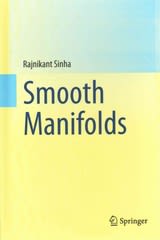

PROBLEM SET 1 (Due: September 21) 1. Two events, A and B, are such that P(A) = 0.2, P(B) = 0.3 and P(A UB) = 0.4. Find the following probabilities: (a) P(An B) (b) P(AC U BC) (c) P(Acn BC) (d) P(Ac | B) 2. Careful inspection of a car manufacturer indicated the following probabilities for defec- tive parts in the production of 100 automobiles. Number of Defective Car Probability 0.36 0.36 0.18 0.06 0.04 Define the following events and calculate the followings: Defective Cars in the production of 100 is less than 3 ( 1) B (a) P(A), P(B) (b) P(An B), P(AUB) (c) Are A and B mutually exclusive? (d) Are A and B collectively exhaustive? 3. Consider the two events A and B in the sample space S. Using the probability axioms, prove the followings. (a) P(BenA) = P(A) - P(An B) (b) P(o) = 0 where o is the empty set. (c) If B C A, P(A - B) = P(A) - P(B). . Let P(.[F) be the conditional probability given F, where P (F) > 0. Show that the conditional probability is a probability (that satisfies the axioms of probability.) 5. A study of a college senior class found that many of them have some poor health habits. Out of 500 students, the following results were found: 210 smoke; 258 drink alcohol immoderately; 216 sleep less than 6 hours a night; 122 smoke and drink; 83 sleep less than 6 hours and drink; 97 smoke and sleep less than 6 hours; 52 have all 3 bad habits. If a senior is selected at random, what is the probability that he(she)3 (a) smokes but does not drink Given all the information you have collected you want to know whether you should b) sleeps little and drinks but does not smoke direct your advertising towards male or female viewers. Most purchasers are young c) neither smokes nor drinks adult females. However, that could be because they are more responsive to your adver- tising, or simply because they watch more television. In order to decide this issue: 6. The content of a computer file will be permanently lost if all of the following events occur: the file is erased (event E), no backup has been made (event B), and no printed (a) Calculate the marginal probabilities (A viewer buys or not, type of viewer) copy exists (event P). (b) Using Bayes Theorem, what are the probabilities that viewers of each type who (a) If the probability of each of E, B and P is 0.05 and the three events are statistically see the commercial will buy a car vac? Do you think that you should redirect independent, what is the probability that a file will be permanently lost? your commercial to appear during the sports programs? Why or why not? Other ideas? (b) Define the event L (" no machine-readable file" ) as true for a file if the file has been erased and no backup has been made. Suppose as before that P(E) = 0.05 but (c) Construct a joint probability table. that there is a probability of 0.2 that no backup has been made for an erased file. What is the probability of L? (c) For the situation in (b), are the events E and B independent? (Assume that P(B) = 0.05) (d) Assume the situation in (b) and also that P is independent of L with P(P) = 0.35. What is the conditional probability of the file being permanently lost given that the event L occurs? 7. If A and B are independent events, then prove that the following pairs are also inde- pendent. (a) A and Bc (b) Ac and B c) Ac and B 8. You are in charge of advertising for the company which produces car vacuum cleaners and management is after you to improve sales. You are advertising on TV in the 9-10 P.M. slot. For the past year, you have collected information about all purchasers of you car vacs via a warranty registration questionnaire. From this, you know that 10,000 viewers of your commercial bought a car vac. Of these 10,000 buyers, the following per- centages fell into viewer type category: Relative Frequency (i) Children and teenagers 0.01 (ii) Males 20-35 0.35 (iii) Females 20-35 0.55 (iv) People over 35 0.09 You have talked to a friend who works for the Nielsen rating company and are rea- sonably confident that the following numbers of people viewed your commercial dur- ing the past year: Absolute Frequency (i) Children and teenagers 50.000 (ii) Males 20-35 6,000 (iii) Females 20-35 14,000 (iv) People over 35 30,000










